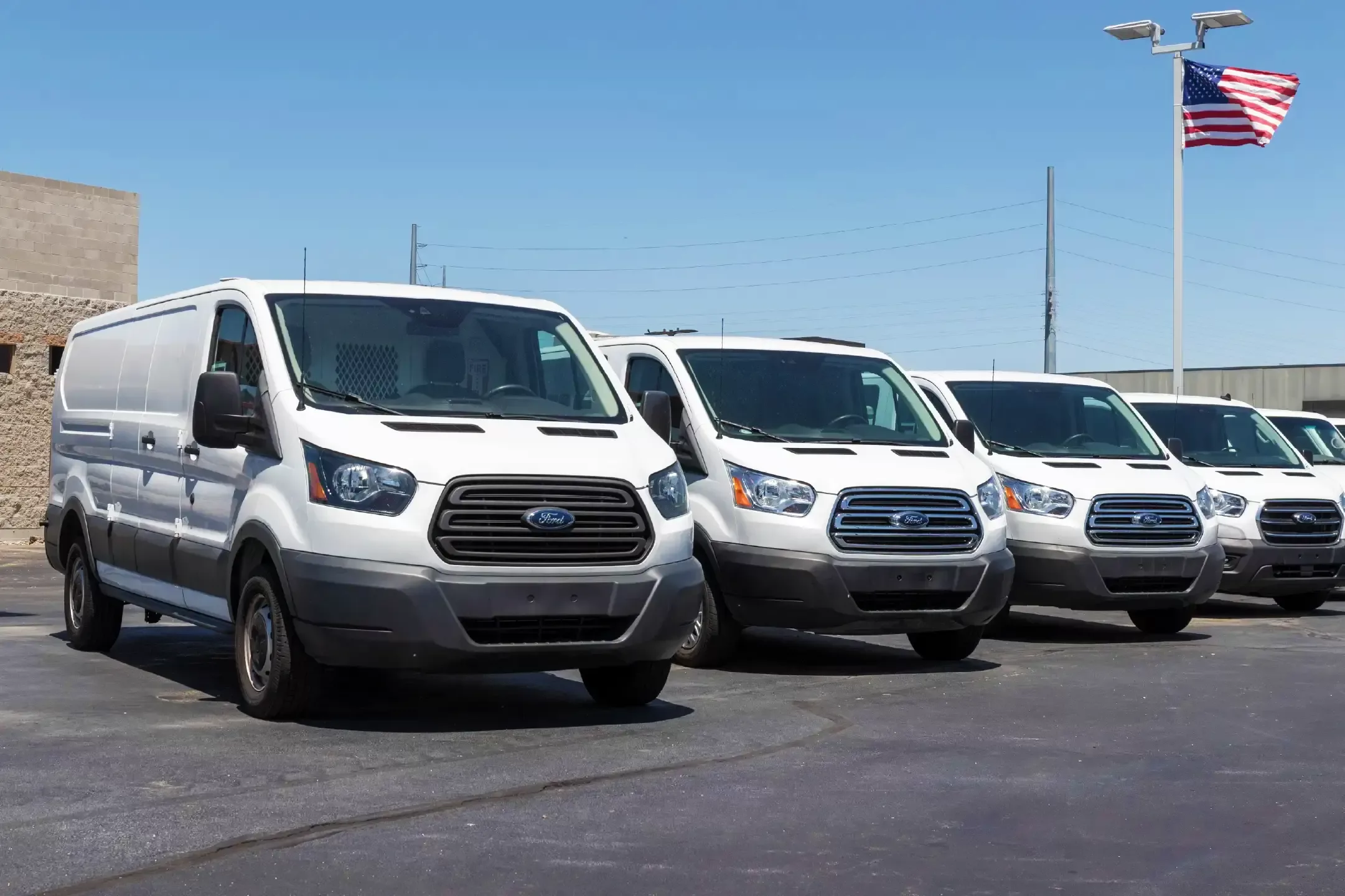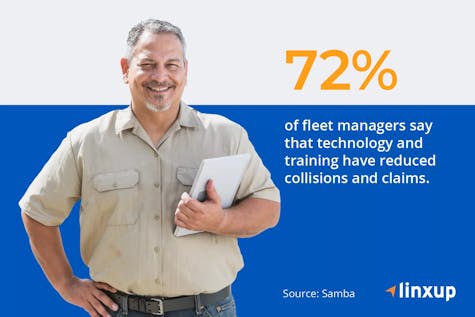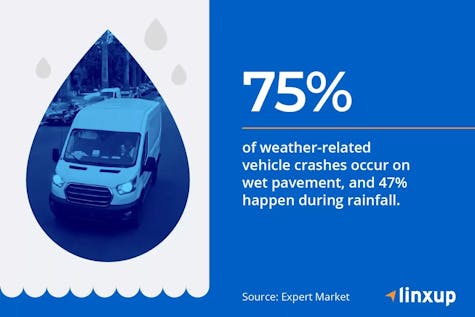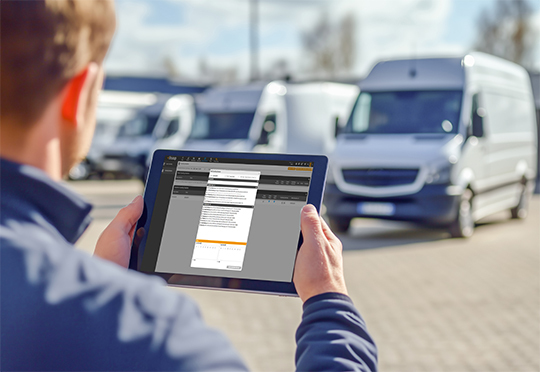
11 Fleet Management Challenges & Solutions for Your Business
Managing a vehicle fleet is tough. Problems arise, and solving them can be expensive. According to OSHA, vehicle accidents cost employers over $60 billion each year. Having many vehicles makes it harder to monitor and keep things running smoothly.
We're here to help make your job simpler. We've put together a list of 11 problems that come with managing a fleet, along with solutions to help your business save money and boost efficiency.
1. Rising operational costs
Increasing costs can really affect your bottom line and business viability, especially for small to medium-sized fleet owners. Fuel, maintenance, and insurance costs are always changing, making it hard to predict and manage your budget.
Solution: Employ smart financial management
You need to understand where every dollar is going. Using accounting software designed for small and medium sized businesses to track your expenses or even a detailed spreadsheet can help you do this. When purchasing vehicles, look beyond the initial price, analyzing fuel efficiency, maintenance costs, and resale values. Even smaller fleets can cut costs by considering new versus used vehicles, comparing insurance quotes, negotiating prices, and committing to a single supplier if it makes sense.
2. Regulatory compliance
Staying up-to-date with changing regulatory rules and laws adds complexity to fleet management. It adds to your paperwork and takes time away from tasks that actually make money. Plus, many fleet managers have trouble attracting prospective employees if proper safety policies and regulatory guidelines aren’t in place.
Solution: Stay informed and aware
Stay informed to avoid penalties and damage to your company's reputation. Visit official sources, like the DOT, and subscribe to their newsletters and social media channels for updates.
Fleet management software like Linxup can help with maintenance scheduling and record-keeping and give you insights into driving patterns for improved safety. A solution like Linxup’s coaching dashboard allows fleet managers to view individual and team driving behaviors, identifying areas for improvement.
3. Vehicle maintenance management
Staying on top of vehicle maintenance may be one of the most important pieces of the fleet management puzzle. Not properly maintaining your fleet can lead to unexpected breakdowns, higher operational costs, and potential safety violation fines. Plus, poorly maintained vehicles can have higher fuel consumption.
Solution: Implement preventative maintenance
Plan for regular service on your vehicles, focusing on critical components and safety systems such as brakes, tires, steering, and lights. Use telematics data from solutions like Linxup that integrate with maintenance partners like Fullbay and Whip Around to trigger reminders based on mileage while keeping detailed maintenance records.

4. Electrification (EV) transition
Electric vehicles (EVs) can lead to massive benefits for fleets. While commercial EVs generally have a higher upfront vehicle price tag, they can help businesses save on future fuel costs and maintenance. But selecting the wrong EVs can create range anxiety, and they may be unable to carry the required payload. They’ll also need proper charging infrastructure at depot sites.
Solution: Take time to research
Before purchasing EVs, thoroughly research the latest models available, considering route needs and load weights. Start with a smaller pilot program to collect real-world data and perform a full cost-of-ownership analysis to better understand potential savings benefits.
You should also check for EV tax credits. Businesses that qualify can receive credits of up to $7,500 for vehicles less than 14,000 pounds (think vans and trucks) and up to $40,000 for larger EV like buses and semi-trucks. There’s no limit on the number of credits you can claim but there are limitations you should consider.
5. Technology integration and utilization
For small and medium-sized fleets, integrating new technology can feel more like a hassle than helpful. These solutions can improve response times and cut costs by collecting, analyzing, and delivering clear recommendations, but they can also be expensive, set up can be confusing, and they may come with a steep learning curve.
Solution: Find the perfect technology partner
Don't spend money on technology that doesn't use data well or offer clear insights. Look for tools that are built for businesses like yours and will solve your unique challenges. Research available solutions and find providers that will work closely with your team during integration and offer easy-to-access customer support.
Solutions like GPS fleet tracking from Linxup are simple — just plug trackers into OBII ports, and monitor them from your smartphone or tablet. And if you need help with anything, we offer U.S. based customer support.
6. Driver safety and behavior
Making sure drivers are safe on the road is an ongoing challenge. When your employees are driving between sites, you trust they’re doing everything they should be — but that may not always be the case. Poor driving habits like speeding, rapid accelerations, and harsh braking can affect safety, insurance premiums, and fuel efficiency which can be costly.
Solution: Use dash cams to ensure safety
Using technology like Linxup to monitor driver behavior can reduce insurance claims, create accountability, and lower maintenance costs. Dash cams can detect problems like tailgating, driver cell phone use, and not using a seat belt so you can coach drivers before small habits turn into big problems. AI event sensitivity settings can also be adjusted to reduce false alerts and avoid distractions. Dash cams also help reinforce good behaviors, making it easier to cultivate a culture of accountability and even lead to less fuel consumption.

7. Fuel management and efficiency
Rising gas prices and inefficient practices like idling make fleet management difficult and costly. The fastest routes aren't always the most economical, and manual route planning is often inefficient for commercial fleets.
Solution: Automatically monitor and adjust routes
Commercial GPS fleet tracking solutions are the first step to better understanding your routes. Solutions like Linxup can help suggest efficient routes that can slash fuel costs and improve operational efficiency.
8. Data overload
Technology partners offer solutions that collect data about your fleet, but it's a waste if you can't translate the information into actionable insights. Some solutions may also provide more data than is necessary for your operation, leaving you with an overwhelming amount of information and analysis paralysis
Solution: Cut through the data with smart tech
Picking the right technology partner is key to making sense of all your fleet's data. For example, with Linxup fleet tracking, data about your vehicles and drivers is turned into easy-to-understand alerts and reports — customized to your fleet’s priorities.
9. Insurance and liability
Insurance and liability are always concerns for fleet managers. Already-high — and rising! — premiums are a significant operating expense, and you may have difficulty getting affordable coverage. And that’s not to mention the administrative headache caused by managing the claims process. In the end, it’s important to stay on top of these things, as it can affect CSA scores and safety records, leading to higher costs down the road.
Solution: Prioritize a culture of safety
Don't start with your insurance provider; begin with your company culture. Create hiring standards and comprehensive training that emphasize safety. In the vehicle, dash cams with GPS tracking can provide real-time driver coaching and evidence to protect your company against false accident claims. By focusing on a culture of safety, you can help reduce high insurance premiums and company liability caused by unsafe driving.
10. Weather and seasonality
Changing weather conditions and seasonality can be a surprising test for fleet managers. You might face increased safety risks as seasons and weather change, including slippery roads, poor visibility, and high winds. These conditions can cause road closures and reduced speeds, leading to delays and disruptions. They can also accelerate wear and tear on your vehicles.
Solution: Forecast and plan ahead for weather
Proactively use weather forecasting and dynamic route planning tools, adjusting routes as needed. Prepare your vehicles for the seasons, such as providing snow chains in the winter and ensuring cooling systems are working in the summer. Finally, establish safety protocols so your drivers know when to pull over and rest, and not risk their safety.

11. Unauthorized use of company assets
Most company-owned vehicles or equipment have parameters for when employees can use them. Unauthorized use of company assets can be a common problem within fleet management, and getting the right visibility over their use can be complicated. Not only can unauthorized use increase operational costs, but it can also increase your legal and insurance risks.
Solution: Monitor company assets with GPS tags
Use fleet and vehicle tracking solutions to monitor when employees use company property. Solutions like Linxup give you real-time insight into how a vehicle is being used and can alert you when it leaves a geofenced area. For tools and trailer tracking, consider GPS asset and equipment devices, which can tell you the item's last location, history, and geofence notifications.
FAQ
Solving the challenges of fleet management can feel overwhelming, but all you need is the proper tools and knowledge to succeed. Here are answers to the most common questions we receive about fleet management.
What’s the difference between fleet management and logistics?
Managing a fleet means handling everything about a company's vehicles and drivers, from getting the vehicles to keeping them running, managing fuel, ensuring safety, and planning the best routes.
Fleet logistics is the broader process of planning, implementing, and controlling the flow of goods. These roles work together to make sure goods or services move efficiently from one location to the next.
What is the biggest challenge in fleet management?
Fleet management offers several challenges, but one of the biggest concerns is rising operational costs. This includes ever-changing fuel prices, ongoing maintenance and repairs, and increasing insurance premiums. Other noteworthy fleet management pain points include staffing shortages and ongoing regulatory compliance.
How can fleet management be improved?
A great way to improve fleet management is by using technology to make operations more efficient. Fleet solutions like Linxup can help owners and managers make more fuel-efficient routes, monitor company assets, coach unsafe driving behaviors, and protect against false accident claims.
Find solutions for your fleet's biggest challenges with Linxup
The world of fleet management comes with challenges that you can solve with knowledge and action. Technology solutions like Linxup extend your reach, allowing better fleet visibility, tracking vehicles in real time, and monitoring driver behavior, all while complying with FMCSA.
Learn more about Linxup and its benefits for your team by requesting a demo or calling us today.


